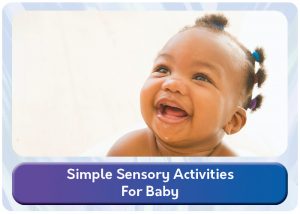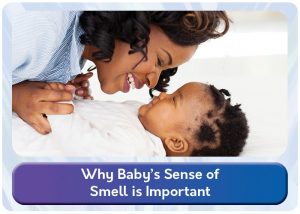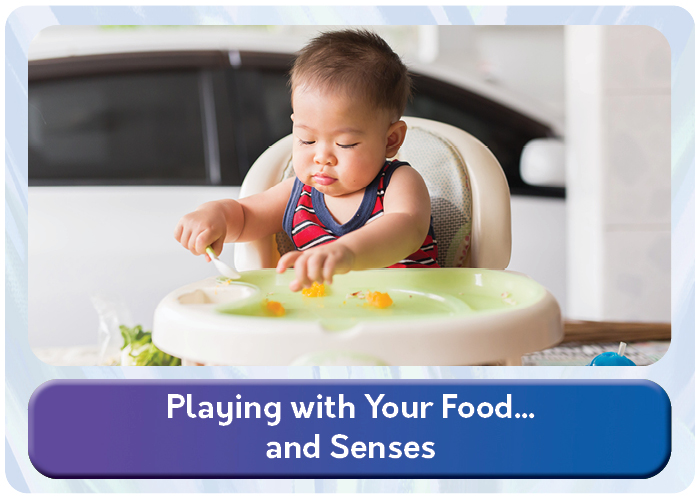Sensory Integration: Know the Basics
Sensory integration is the process by which we receive information through our senses, organize this information, and use it to participate in everyday activities.
An example of sensory integration is:
- Baby smelling food as they bring it to their mouth
- Tasting the food
- Feeling the texture of the food
- Determining what this food is and if they want more
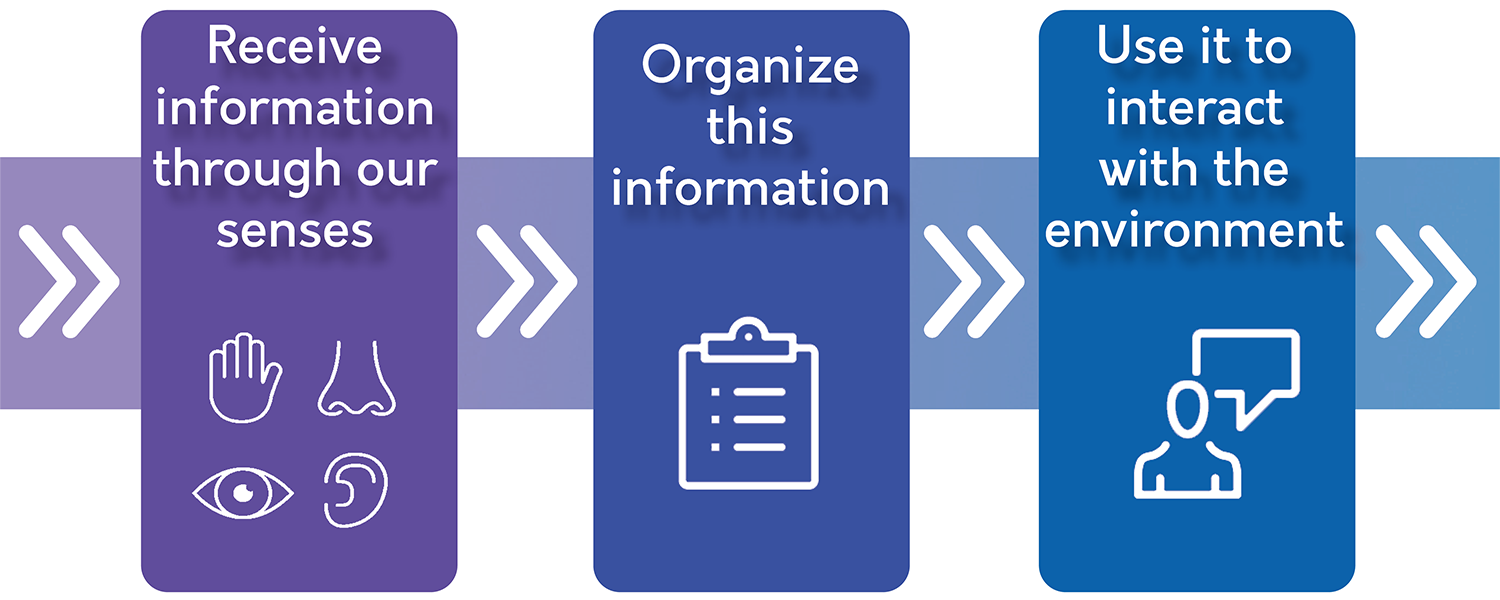
Did You Know There Are 8 Senses?
You read that right! Most people think there are just 5 senses, but there are actually 8! So what are the 8 senses?
- Sight (Vision)
- Hearing (Auditory)
- Smell (Olfactory)
- Taste (Gustatory)
- Touch (Tactile)
- Vestibular (Movement): the movement and balance sense, which gives us information about where our head and body are in space. Helps us stay upright when we sit, stand, and walk.
- Proprioception (Body Position): the body awareness sense, which tells us where our body parts are relative to each other. It also gives us information about how much force to use, allowing us to do something like crack an egg while not crushing the egg in our hands.
- Interoception (Internal): This sense helps us understand our body’s internal sensations. This is the sense that helps us know if we’re hungry, thirsty, hot, cold, or any other feeling that begins within our bodies.
Watch our parents’ guide to the multiple developing senses:
So how does this all come together? Here’s an example of sensory integration while playing baseball:
 The tactile (touch) sense helps this boy hold his bat correctly.
The tactile (touch) sense helps this boy hold his bat correctly.- Proprioception (body position) helps him know his body is in the correct position.
- Vestibular (balance and movement) information helps him stay upright while swinging the bat.
- His vision (sight) and hearing (sound) are also key to his success in the fame.
Sensory Milestones
When does sensory development begin?
Very early on! In fact, some sensory development, like sense of smell, begins in utero.
What sensory integration milestones should my child be reaching?
As your child grows and develops, they should achieve new sensory milestones. From visual tracking, to reaching for new toys, to putting objects in their mouth (yes, that’s typical!), baby will keep engaging their senses to learn about the world around them.
Learn all of the sensory milestones through 18 months here!
Watch some of these early sensory milestones, which baby will reach around 0-3 months:
Sensory Activities
Keeping their senses engaged through everyday activities
We’ve got some great ideas for your little one, from birth to 18 months.
What to Watch For
Some children have difficulties receiving and processing incoming sensations.
Some signs of a sensory issue include:
- Overly sensitive or under reactive to touch, movement, sights, or sounds
- Unusually high or low activity level
- Easily distracted; poor attention to tasks
- Delays in speech, motor skills, or academic achievement
- Coordination problems; appears clumsy or awkward
- Poor body awareness
- Difficulty learning new tasks or figuring out how to play with unfamiliar toys
- Difficulty with tasks that require using both hands at the same time
- Appears to be disorganized most of the time
- Difficulty with transitions between activities or environments
- Immature social skills
- Impulsivity or lack of self-control
- Difficulty calming self once “wound up”
What to do if you suspect a delay
Each child reacts to sensory information differently. Sensory issues are very complex because a child’s sensory system could be a mixture of over reactive, under reactive, or actively engaged.
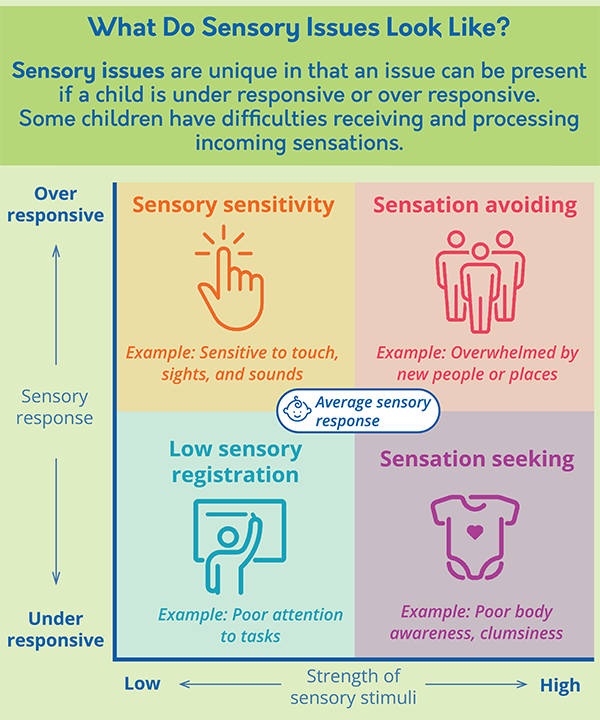
If you suspect an issue, contact a healthcare provider to share your concerns. Everyday tasks can become difficult for a child who processes sensory information differently, so it’s best to connect with a professional who can help you understand your child’s sensory integration.
Sources
Mailloux Z & Smith Roley S. Sensory Integration Development and Early Signs of Difficulties. July 2013.


